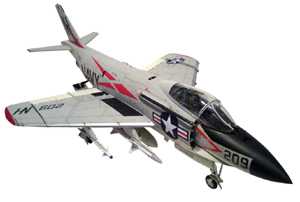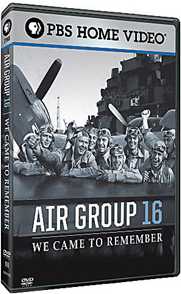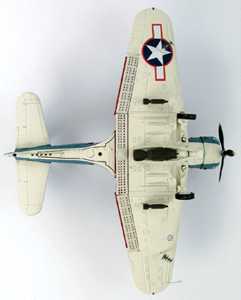|
Click Here are two stories that were sent to me.
It is very, very important that you read both stories and you will learn a
secret about the USS Lexington and a secret about Becoming a Man.
STORY
NUMBER ONE
Many years ago,
Al Capone virtually owned Chicago. Capone wasn't famous for anything
heroic He was notorious for enmeshing the windy city in everything from
bootlegged booze and prostitution to murder.
Capone had a lawyer nicknamed "Easy Eddie." He was Capone's lawyer for a good
reason. Eddie was very good! In fact, Eddie's skill at legal maneuvering kept
Big Al out of jail for a long time.
To show his appreciation, Capone paid him very well. Not only was the money big,
but Eddie got special dividends, as well. For instance, he and his family
occupied a fenced-in mansion with live-in help and all of the conveniences of
the day. The estate was so large that it filled an entire Chicago City block.
Eddie lived the high life of the Chicago mob and gave little consideration to
the atrocity that went on around him. Eddie did have one soft spot,
however. He had a son that he loved dearly. Eddie saw to it that his young son
had clothes, cars, and a good education. Nothing was withheld. was no
object.
And, despite his involvement with organized crime, Eddie even tried to teach him
right from wrong. Eddie wanted his son to be a better man than he was.
Yet, with all his wealth and influence, there were two things he couldn't give
his son; he couldn't pass on a good name or a good example.
One day, Easy Eddie reached a difficult decision. Easy Eddie wanted to rectify
wrongs he had done.
He decided he would go to the authorities and tell the truth about Al "Scarface"
Capone, clean up his tarnished name, and offer his son some semblance of
integrity. To do this, he would have to testify against The Mob, and he knew
that the cost would be great. So, he testified.
Within the year, Easy Eddie's life ended in a blaze of gunfire on a lonely
Chicago Street. But in his eyes, he had given his son the greatest gift he had
to offer, at the greatest he could ever pay. Police removed from his
pockets a rosary, a crucifix, a religious medallion, and a poem clipped from a
magazine.
The poem read:
"The clock of life is wound but once, and no man has the power to tell just when
the hands will stop, at late or early hour. Now is the only time you own. Live,
love, toil with a will. Place no faith in time. For the clock may soon be
still."
STORY
NUMBER TWO
World War II produced many
heroes. One such man was Lieutenant Commander Butch O'Hare. He was a
fighter pilot assigned to the aircraft carrier Lexington in the
South Pacific.
One day his entire squadron was sent on a mission. After he was airborne, he
looked at his fuel gauge and realized that someone had forgotten to top off his
fuel tank. He would not have enough fuel to complete his mission and get back to
his ship.
His flight leader told him to return to the carrier. Reluctantly, he dropped out
of formation and headed back to the fleet.
As he was returning to the mother ship, he saw something that turned his blood
cold; a squadron of Japanese aircraft was speeding its way toward the American
fleet.
The American fighters were gone on a sortie, and the fleet was all but
defenseless. He couldn't reach his squadron and bring them back in time to save
the fleet nor could he warn the fleet of the approaching danger. There was only
one thing to do. He must somehow divert them from the fleet.
Laying aside all thoughts of personal safety, he dove into the formation of
Japanese planes.
Wing-mounted 50 calibers blazed as he charged in, attacking one surprised enemy
plane and then another. Butch wove in and out of the now broken formation and
fired at as many planes as possible until all his ammunition was finally spent.
Undaunted, he continued the assault. He dove at the planes, trying to clip a
wing or tail in hopes of damaging as many enemy planes as possible, rendering
them unfit to fly.
Finally, the exasperated Japanese squadron took off in another direction. Deeply
relieved, Butch O'Hare and his tattered fighter limped back to the carrier.
Upon arrival, he reported in and related the event surrounding his return. The
film from the gun-camera mounted on his plane told the tale. It showed the
extent of Butch's daring attempt to protect his fleet. He had, in fact,
destroyed five enemy aircraft.
This took place on February 20, 1942, and for that action Butch became the
Navy's first Ace of W.W.II, and the first
Naval Aviator to win the Congressional Medal of Honor.
A year later Butch was killed in aerial combat at the age of 29. His home town
would not allow the memory of this WW II hero to fade, and today, O'Hare Airport
in Chicago is named in
tribute to the courage of this great man.
So, the next time you find yourself at O'Hare International, give some thought
to visiting Butch's memorial displaying his statue and his
Medal of Honor. It's
located between Terminals 1 and 2.
SO WHAT DO THESE TWO STORIES HAVE TO DO WITH EACH OTHER?
Butch O'Hare was "Easy Eddie's" son.
Click Here to read the rest of the
story. |
|
F3H-2N Demon flown by Wally Schirra from VF-124 Stationed on the USS Lexington Aircraft Carrier 1956 - 1957" src="images/F3H_Demon_Jet_Figter_Flown_by_Wally_Schirra_VF-124.jpg" border="1" hspace="10" vspace="4" align="left" width="300" height="167">
F3H-2N Demon
Wally Schirra, VF-124, USS Lexington
F3H-2N Demon Display Model. In 1956 and '57, future astronaut Wally Schirra flew
a McDonnell F3H-2N Demon - a swept-wing, carrier-based jet fighter that was the
forerunner to the F-4 Phantom - as Operations Officer of VF-124 onboard the
carrier USS Lexington in the Pacific.
This is the F3H Demon that was accepted into VF-124 service by Schirra (who was
chosen as one of the original seven
Project Mercury astronauts
and became the fifth
American man in space when he piloted the Mercury-Atlas 8 spaceship in 1962).
United States Navy ( USN ) McDonnell F3H-2NDemon aircraft ( BuNo - 133550 )
assigned to Fighter Squadron 151 ( VF-151 ) "Vigilantes" on the flight deck of
aircraft carrier USS Coral Sea (CVA-43) during the ship's Operational Readiness
Inspection (ORI) off Hawaii, 18 December 1961.
The F3H was developed by McDonnell and the Navy to close the performance gap
between carrier and land-based aircraft. When it was first rolled out in early
1951 the sleek, swept-wing aircraft looked unlike anything then in service.
The story of its successes and of its nagging problems.
Designed as a replacement for the U.S. Navy's F2H Banshee, the McDonnell F3H
Demon served with the fleet for the decade that included the Cuban Missile
Crisis.
F3H-2 Demon - a single-seat, subsonic, carrier-based jet interceptor that
served the U.S. Navy from 1956 until 1964.
McDonnell F3H Demon - a swept-wing, carrier-based jet fighter that was the
forerunner to the F-4 Phantom - flown by the U.S. Navy's VF-21 "Freelancers"
when they were stationed on the USS Midway (CV-41) in 1959.
the F3H Demon, a carrier-based, all-weather jet interceptor fighter, of which
more than 500 were produced. Advanced features included swept-back wings,
adjustable horizontal stabilizers, leading edge wing slats and more. |
|

Air Group 16
DVD Video
We Came to Remember.
Through archival footage and first-person accounts, this program tells the
story of Air Group 16 and its pilots, radiomen and gunners who served on the
aircraft carrier USS Lexington (CV-16), the "Blue Ghost," in World War II's
Pacific Theater. You'll even meet the men and their families as they journey
to Washington, D.C., for the dedication of the National World War II
Memorial in 2004. Widescreen, color and B&W, 30 minutes.
 In 1956 and '57, future astronaut Wally Schirra flew a
McDonnell F3H-2N Demon - a swept-wing, carrier-based jet fighter that was the
forerunner to the F-4 Phantom - as Operations Officer of VF-124 onboard the
carrier USS Lexington in the Pacific. In 1956 and '57, future astronaut Wally Schirra flew a
McDonnell F3H-2N Demon - a swept-wing, carrier-based jet fighter that was the
forerunner to the F-4 Phantom - as Operations Officer of VF-124 onboard the
carrier USS Lexington in the Pacific.
F3H Demon that was
accepted into VF-124 service by Schirra (who, chosen as one of the original
seven Project Mercury astronauts, became the fifth American in space when he
piloted the Mercury-Atlas 8 in 1962
Dauntless dive-bomber flown by VB-16 when it was stationed
on the USS Lexington (CV-16)
during the Gilbert Islands campaign of November, 1943
Weeks before Midway, during the Battle of the Coral Sea,
the TBD
Devastator made its mark when the first Japanese carrier sunk during the
War, the Shoho, was attacked by both torpedo bombers and dive bombers from the
USS Lexington.
About the USS Lexington (CV-16)
It was the fifth United States Naval ship to be named "Lexington." The USS
Lexington (CV-16), also known as "The Blue Ghost", was laid down as Cabot 15
July 1941 by Bethlehem Steel Company in Quincy, Mass., renamed Lexington 16 June
1942, she was launched on 23rd of September 1942.
After Caribbean shakedown and yard work at Boston, the USS Lexington sailed for
Pacific action thourgh the Panama Canal, arriving Pearl Harbor on 9 August 1943.
She raided Tarawa in late September and Wake in October, then returned Pearl
Harbor to prepare for the Gilbert Islands operation. From 19 to 24 November she
made searches and flew sorties in the Marshall Islands and covering the landings
in the Gilbert Islands. Her pilots downed 29 enemy aircraft on the 23rd and 24th
of November.
After the war, the USS Lexington was decommissioned at Bremerton, Washington on
the 23rd of April 1947 and then entered the Reserve Fleet. Designated
attack carrier CVA-16 on 1 October 1952, she began conversion and modernization
in Puget Sound Naval Shipyard 1 September 1953, receiving a new angled flight
deck.
Into 1969, the USS Lexington has operated out of her home port of Pensacola
Florida as well as Corpus Christi Texan and New Orleans, qualifying student
pilots and maintaining the high state of training of both active duty and
reserve naval aviators. Her work has been of increasing significance as she has
prepared the men vital to the continuing Navy and Marine Corps operations over
Vietnam, where naval aviation played a major role. The USS Lexington
marked her 200,000th arrested landing 17 October 1967, and was redesignated
CVT-16 on 1 January 1969.

She continued as a training carrier for the next 22 years until decommissioned 8
November 1991. On 15 June 1992, the ship was donated as a museum and now
operates as such in Corpus Christi, Texas. There she has an IMAX theatre.
The USS Lexington has been designated a National Historic Landmark.
The USS Lexington received the Presidential Unit Citation and 11 battle stars
for World War II service.
SBD-5 Dauntless 1/72 Die Cast Model" src="images/SBD_Dauntless_Dive_Bomber_WW2_Airplane.jpg" border="1" hspace="10" vspace="4" width="300" height="166" align="left">
SBD-5 Dauntless 1/72 Die Cast Model Sample View
VB-16, USS Lexington, 1943
The Dauntless dive-bombers were flown by VB-16 when they were stationed on the
USS Lexington (CV-16) during the
Gilbert Islands campaign of November, 1943. |



 In 1956 and '57, future astronaut Wally Schirra flew a
McDonnell F3H-2N Demon - a swept-wing, carrier-based jet fighter that was the
forerunner to the F-4 Phantom - as Operations Officer of VF-124 onboard the
carrier USS Lexington in the Pacific.
In 1956 and '57, future astronaut Wally Schirra flew a
McDonnell F3H-2N Demon - a swept-wing, carrier-based jet fighter that was the
forerunner to the F-4 Phantom - as Operations Officer of VF-124 onboard the
carrier USS Lexington in the Pacific.